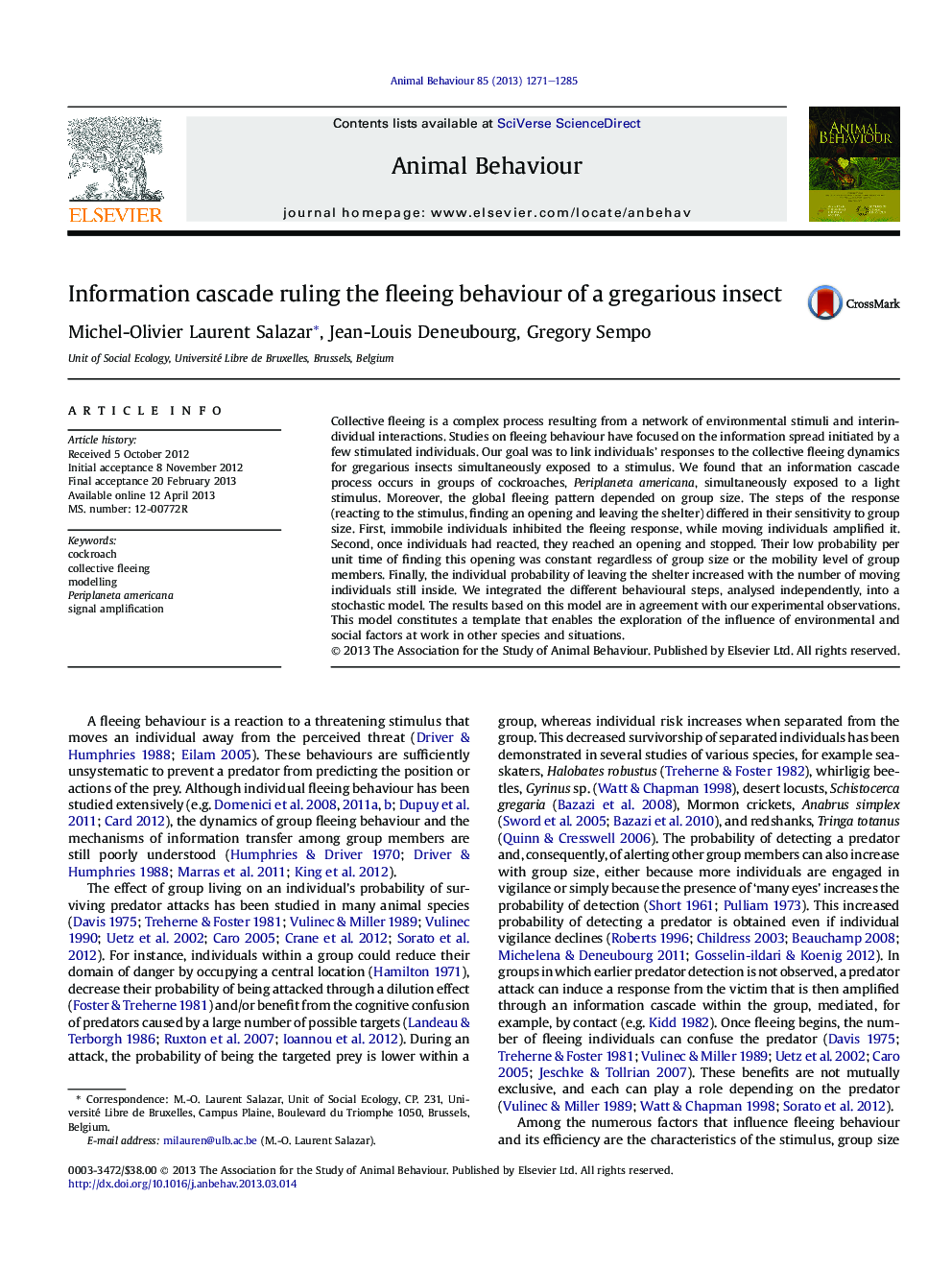| Article ID | Journal | Published Year | Pages | File Type |
|---|---|---|---|---|
| 10970749 | Animal Behaviour | 2013 | 15 Pages |
Abstract
Collective fleeing is a complex process resulting from a network of environmental stimuli and interindividual interactions. Studies on fleeing behaviour have focused on the information spread initiated by a few stimulated individuals. Our goal was to link individuals' responses to the collective fleeing dynamics for gregarious insects simultaneously exposed to a stimulus. We found that an information cascade process occurs in groups of cockroaches, Periplaneta americana, simultaneously exposed to a light stimulus. Moreover, the global fleeing pattern depended on group size. The steps of the response (reacting to the stimulus, finding an opening and leaving the shelter) differed in their sensitivity to group size. First, immobile individuals inhibited the fleeing response, while moving individuals amplified it. Second, once individuals had reacted, they reached an opening and stopped. Their low probability per unit time of finding this opening was constant regardless of group size or the mobility level of group members. Finally, the individual probability of leaving the shelter increased with the number of moving individuals still inside. We integrated the different behavioural steps, analysed independently, into a stochastic model. The results based on this model are in agreement with our experimental observations. This model constitutes a template that enables the exploration of the influence of environmental and social factors at work in other species and situations.
Related Topics
Life Sciences
Agricultural and Biological Sciences
Animal Science and Zoology
Authors
Michel-Olivier Laurent Salazar, Jean-Louis Deneubourg, Gregory Sempo,
